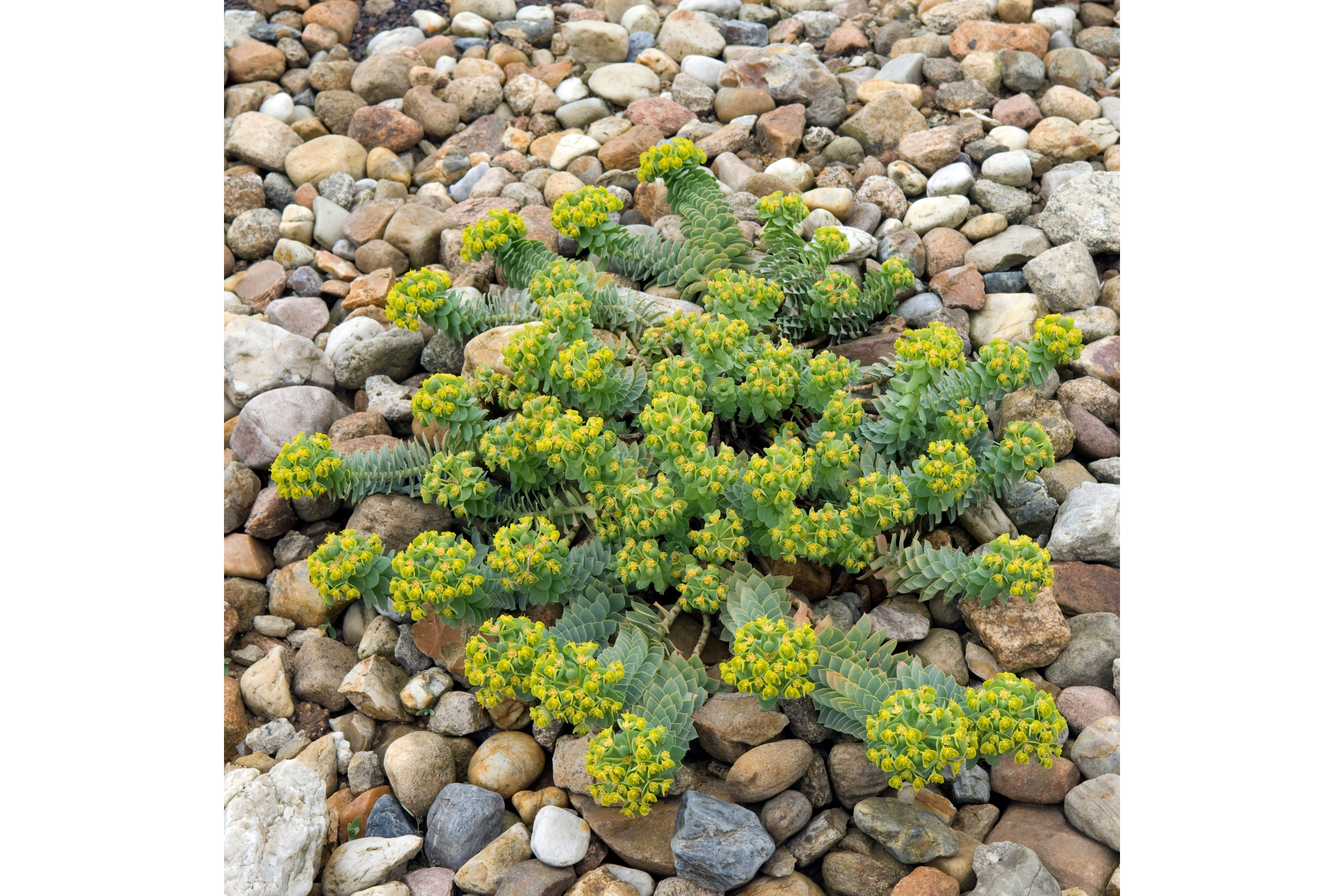Myrtle spurge
(Euphorbia myrsinites)

Description
“Pet poisonous” – Toxic parts: leaves, stem, flowers Euphorbia myrsinites, the myrtle spurge, blue spurge, or broad-leaved glaucous-spurge, is a succulent species of the spurge (family Euphorbiaceae). The plant is native to southeastern Europe and Asia Minor, from Italy east through the Balkans to Crimea and Turkey. Myrtle spurge is an evergreen perennial. It has sprawling stems growing to 20–40 cm long. The leaves are spirally arranged, fleshy, pale glaucous bluish-green, 1–2 cm long. The flowers are inconspicuous, but surrounded by bright sulphur-yellow bracts (tinged red in the cultivar 'Washfield'); they are produced during the spring. Plants spread primarily by seed and are capable of projecting seed up to 15 feet. The plant's milky sap can cause significant skin and eye irritation in humans. Goggles, gloves and protective gear is often used when removing plants. Children are more susceptible than adults to symptoms from myrtle spurge, suggesting play areas not in proximity to the species. Pets can have similar reactions to myrtle spurge sap exposure.
Taxonomic tree:







